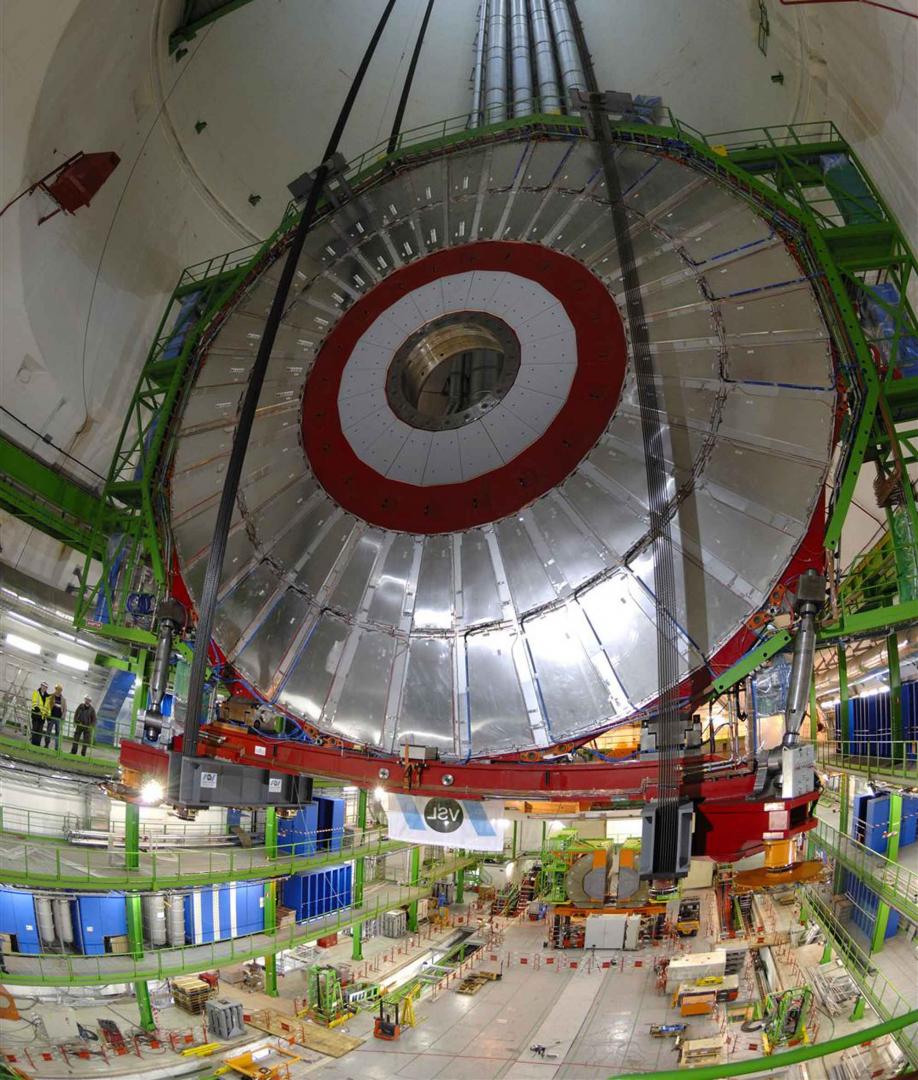While the Large Hadron Collider (LHC) takes a break for its first long shutdown, the CMS collaboration are busy maintaining and consolidating the detector to be sure to handle the collider’s improved performance from 2015 onwards.
The biggest priority for CMS is the tracker performance. The CMS tracking system forms the innermost subdetector and fits snugly round the LHC beampipe. It must withstand an onslaught of some 1010 particles a second and the aggressive field of mixed radiation that this produces.
Another major element is to improve the muon detectors with a fourth endcap layer to help discriminate between interesting muons and fake signatures or background. New shielding discs, 10 centimetres deep, are to be installed on either end of the detector. Each shielding disc is made of 12 iron sector-casings filled with a special concrete. The concrete, developed for this specific application by CERN’s civil engineers, is almost 50% denser than normal concrete – it is made using haematite (or ferric oxide) instead of the usual sand – and it is loaded with boron to absorb low-energy neutrons that would otherwise give rise to unwanted hits in the detector.
The new 100-tonne shielding discs represent the first large mechanical elements of CMS to be constructed entirely underground in the experimental cavern. Each disc will have to be taken apart into its 12 component sectors for lowering and then be rebuilt in a vertical position underground. The shielding discs will have an installed clearance to the new detector layer of around 10–20 millimetres, so it will be a delicate operation and the logical course of action is to install the discs before the detectors.
The schedule for 2013 is planned in fine detail with a list of hundreds of tasks that are currently being translated into day-to-day planning schematics. Amid this important technical work, the CMS collaboration will attempt to welcome around 20,000 visitors to the site at Point 5 over the course of the year. The coming two years might be described as a shutdown period for the LHC and its experiments, but life at Point 5 will be as busy as it has ever been.
This edited extract is from an article in the CERN Courier April issue. Read the full article

